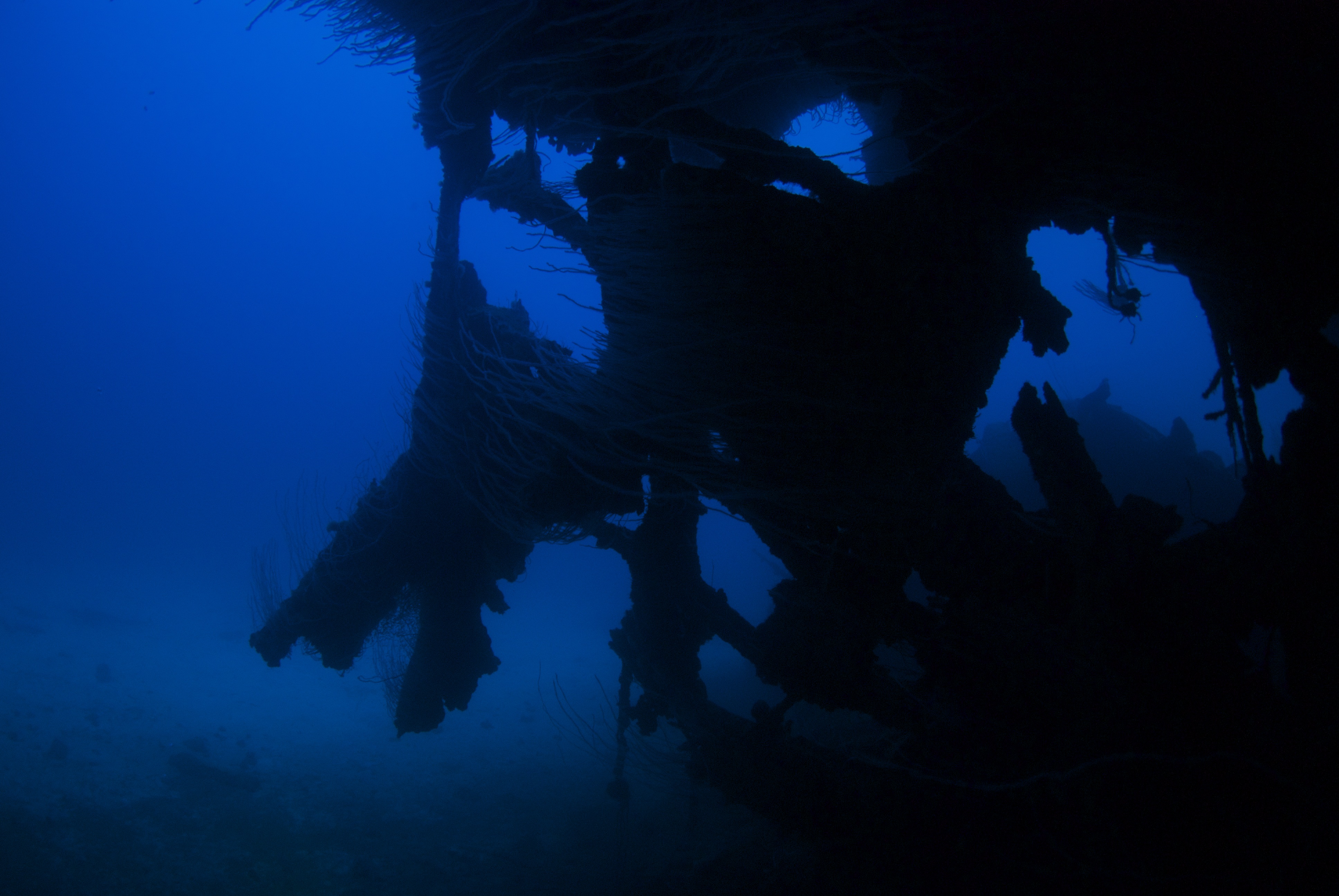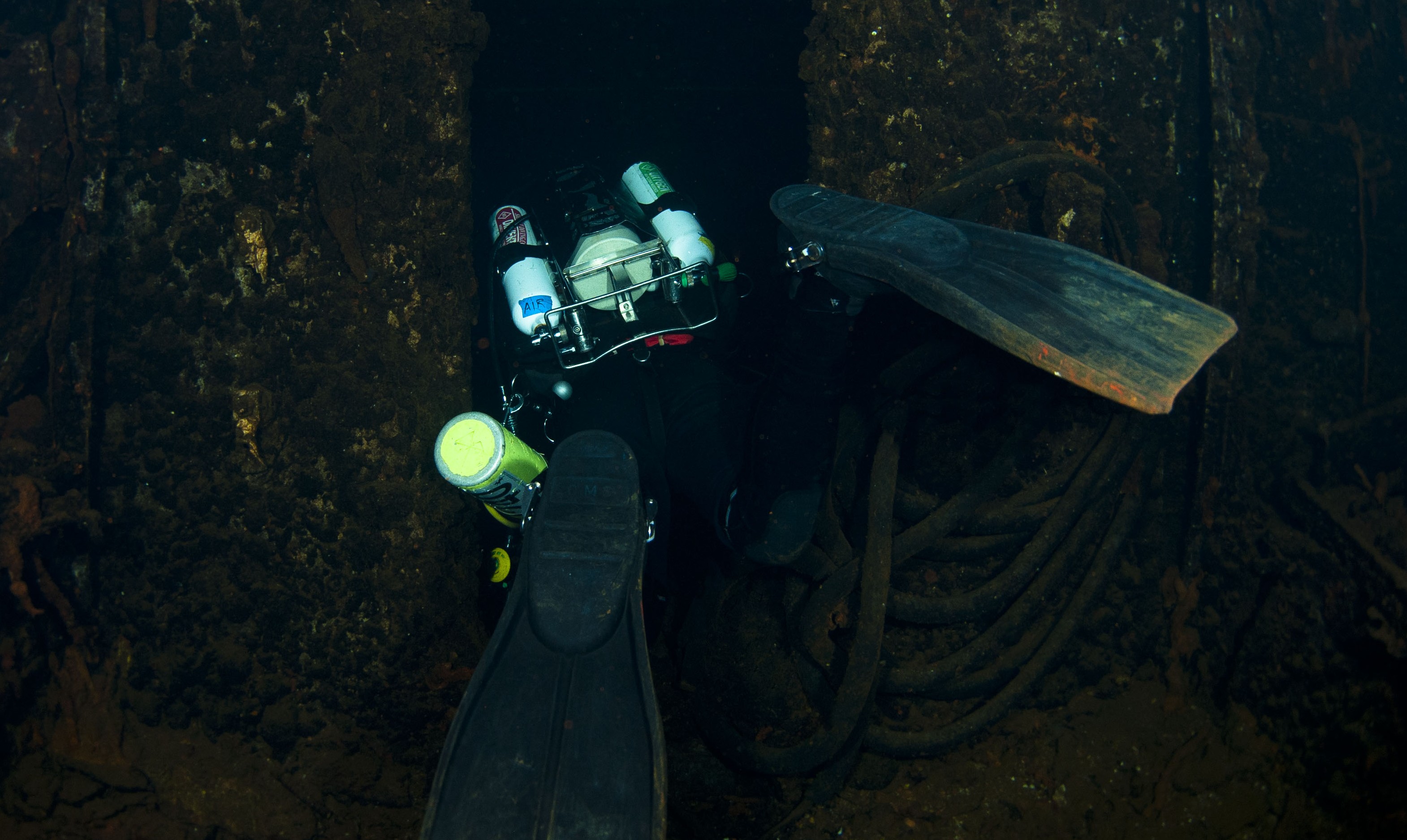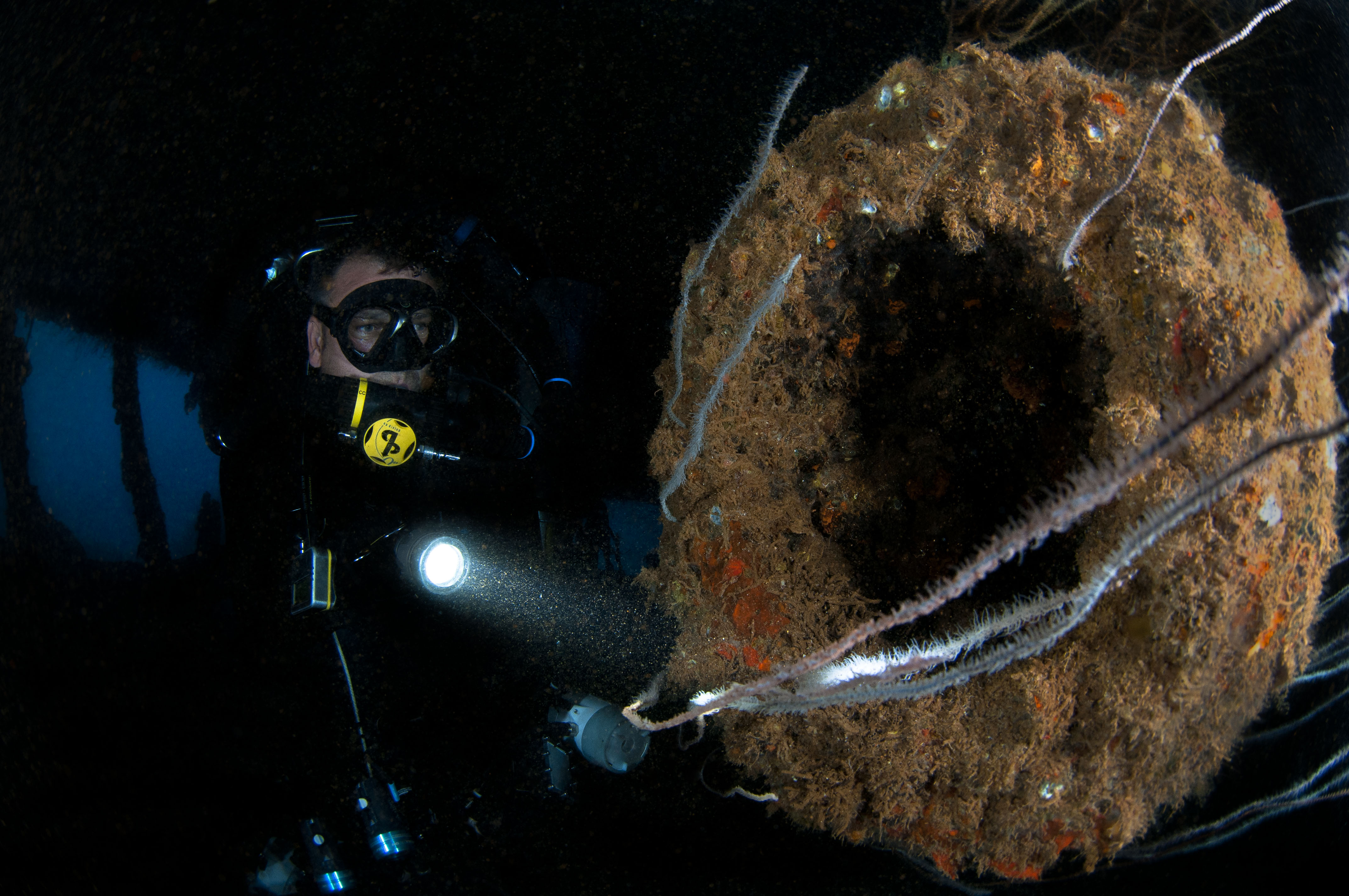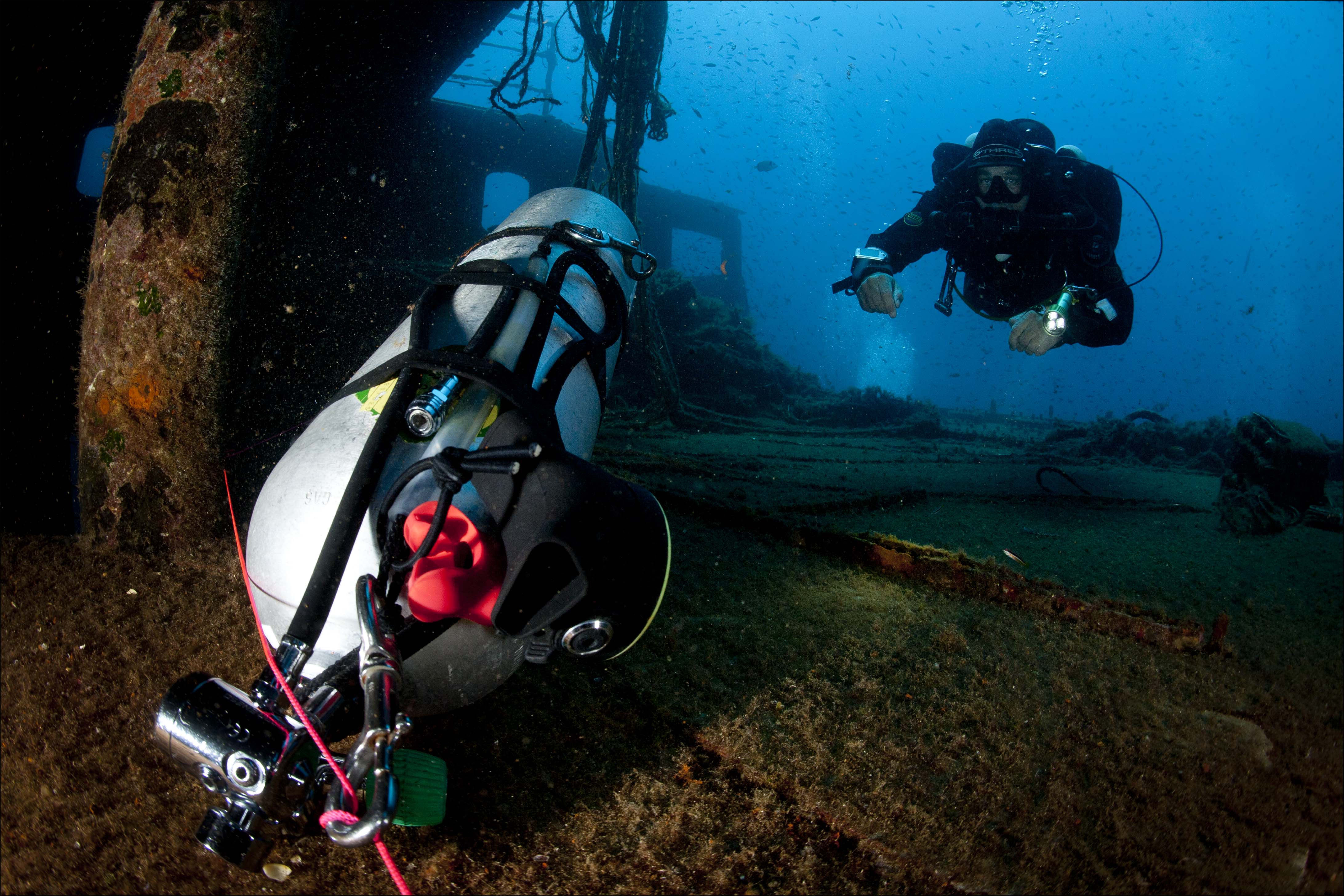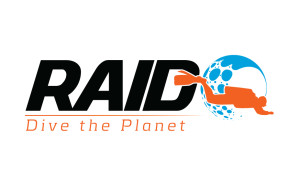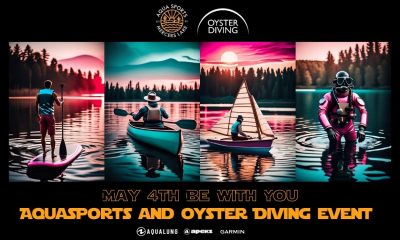News
Paul Toomer: Wreck Head
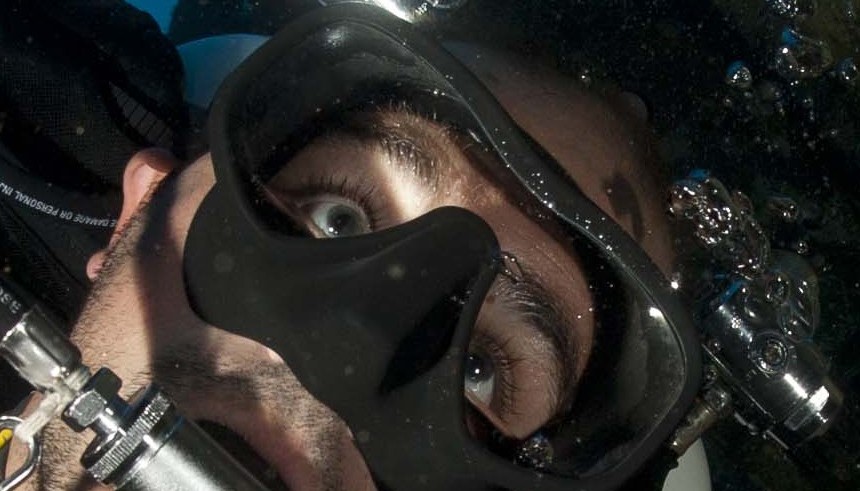
Part 5 – Lost Buddy
In this article, we will be looking at what has to be one of the creepiest skills on an advanced wreck course, and that’s a lost team mate! Can you imagine what it must feel like to turn around and one of your team is missing? I think it would probably be accompanied by a little accident in the back end of your suit; although I imagine that in a scenario such as this, the lost buddy’s pants will be in a lot worse state.
We will also be looking at staging though, which is a rocking skill as it makes you feel “oh so techie” and is so easy to do!
As with my previous article about losing your line, there should be no reason whatsoever to lose a team mate during a dive. Good use of lines, lights and communications will almost definitely mean that the only time you will use this drill is on your course.
The most common reason for team mates getting lost is loss of visibility. A silt out in a wreck can be pretty frightening; visibility can drop in an instant.
So there you are, enjoying the inside of some thrilling wreck when you realise someone is gone! Missing. LOST! My first piece of advice is take a few sanity breaths yourself and calm your other team mates down too. We all know that our minds will now be full of trepidation and fear.
Next, make sure you are all going to stay safe. The only way divers stay safe is by having enough gas to breath. Don’t now go getting yourself into a situation that removes any possibility of you getting out of the wreck yourself. Take a second to recompute your gas schedule based on thirds.
Now you have an allowable maximum search time based on your gas volume. Please don’t ignore your decompression schedule if there is one and don’t go racking up masses of deco unless you can complete the obligation.
If the diver went missing while reeling the line out on the way into the wreck I suggest you tie the line off immediately. This now gives you a final search position, as the diver must be behind you. If you are on a line that is semi permanent (quite rare for wreckers but common for cavers) then you need to mark your position on the line. I use a personalised marker nicknamed a “cookie”. This too gives you a final search position.
Next, cover all lights; you may actually see the glow from your team mate’s light. If no light is visible, look for signs of movement. Perhaps silt kicked up or percolation falling from the ceilings.
If this still yields no joy then it is time to search. Slowly swim down the line and look for signs of the missing diver. If you find the diver but he/she is off the line down another passageway do NOT rush after them. Keep you and your team safe. Tie yourself to your primary line making a “T”. Also mark the way to the exit with an Arrow marker. I like to tie my “T” into the arrow so my search line does not slide on the primary line.
If you have searched to the limits of your available time and gas it would probably be a good idea to leave the missing diver as many clues on how to get out as possible. Leave the primary line in the wreck. It can also be used by a search and rescue team if needs be. The main reason though is that the diver may find it and make a safe exit using it. Before you leave tie your torch into the line shining its beam onto an arrow marker clearly pointing to the exit.
More often than not, your missing team mate will be waiting outside searching for you, and waiting to see that you are safe. Phew!!!
Now let’s move onto something a little less stressful – Staging! It even sounds techie!
Staging is a very clever technique actually as it allows you to move through the wreck without having to carry masses of cylinders but also NOT putting yourself at much more of an increased risk. The main point is, that trying to get through very tight passageways and doors with stages on is very difficult. So why not leave them for later retrieval.
We use the rule of thirds for staging as well so management of the stage is easy. Use a third of its volume and then stage it. This means when you get back to it, it still has two thirds of its original volume left. It’s the same principle as all penetration gas rules.
Staging though needs to be done carefully. The cylinder needs to be tied to the primary line so that it can be easily relocated. Because you have used this cylinder to penetrate you sure as hell are going to need it to exit the wreck, so make sure it’s secure. Use the neck piston clip to secure it to the line. Double wrap the line through the gate of the piston clip to keep it static, therefore stopping it from drifting away. Finally, before moving on, turn the cylinder off but leave it charged. You do not want to come back to an empty stage!
There is an unwritten rule in wrecks and caves that staged cylinders are left alone. Can you imagine the consequences of not following this rule?
And there you have it; our episode on lining is at an end. Next time round I am going to look at lights. And let me tell you, dive lights are sexy little beasts so make sure you come back to the Wreck Diving section of Scubaverse.com in a couple of weeks from now..
As ever, all opinions expressed are my own. I am in no way trying to replace proper instruction. My opinions may differ from agency to agency and instructor to instructor and I do not wish to disrepute any of them.
Paul is the Director of Training at RAID. To find out more about the courses that RAID offers, visit www.diveraid.com.
Blogs
TRAVEL BLOG: Jeff Goodman Dives SOMABAY, Part 3

Today we are diving one of the outer reefs from an inflatable. As we reach the bottom, a reef octopus eases its way into the cover of a small crack in the coral while displaying it’s incredible ability to change colour. They are arguably one of the most charismatic of reef dwellers and it is always exciting for me to simply hover and watch. I would have spent longer and waited for it to come and investigate me, but as dive time is limited we wanted to move on and find a turtle.
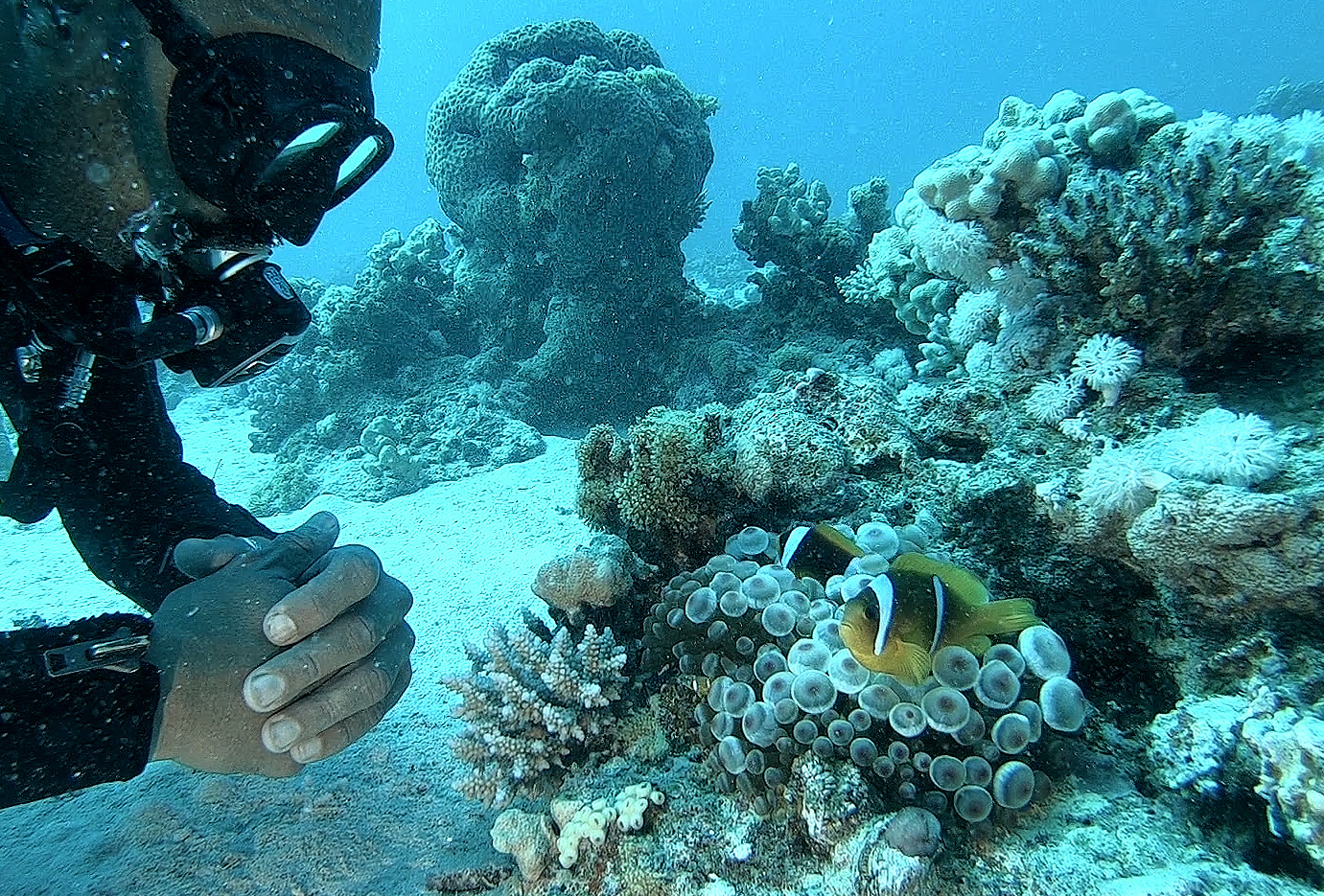
The waters around Somabay are well protected and hold a rich variety of marine life. The reef edges are thriving colonies of coral and shoaling fish, while nearer the sea bed plenty of wildlife is still to be found.
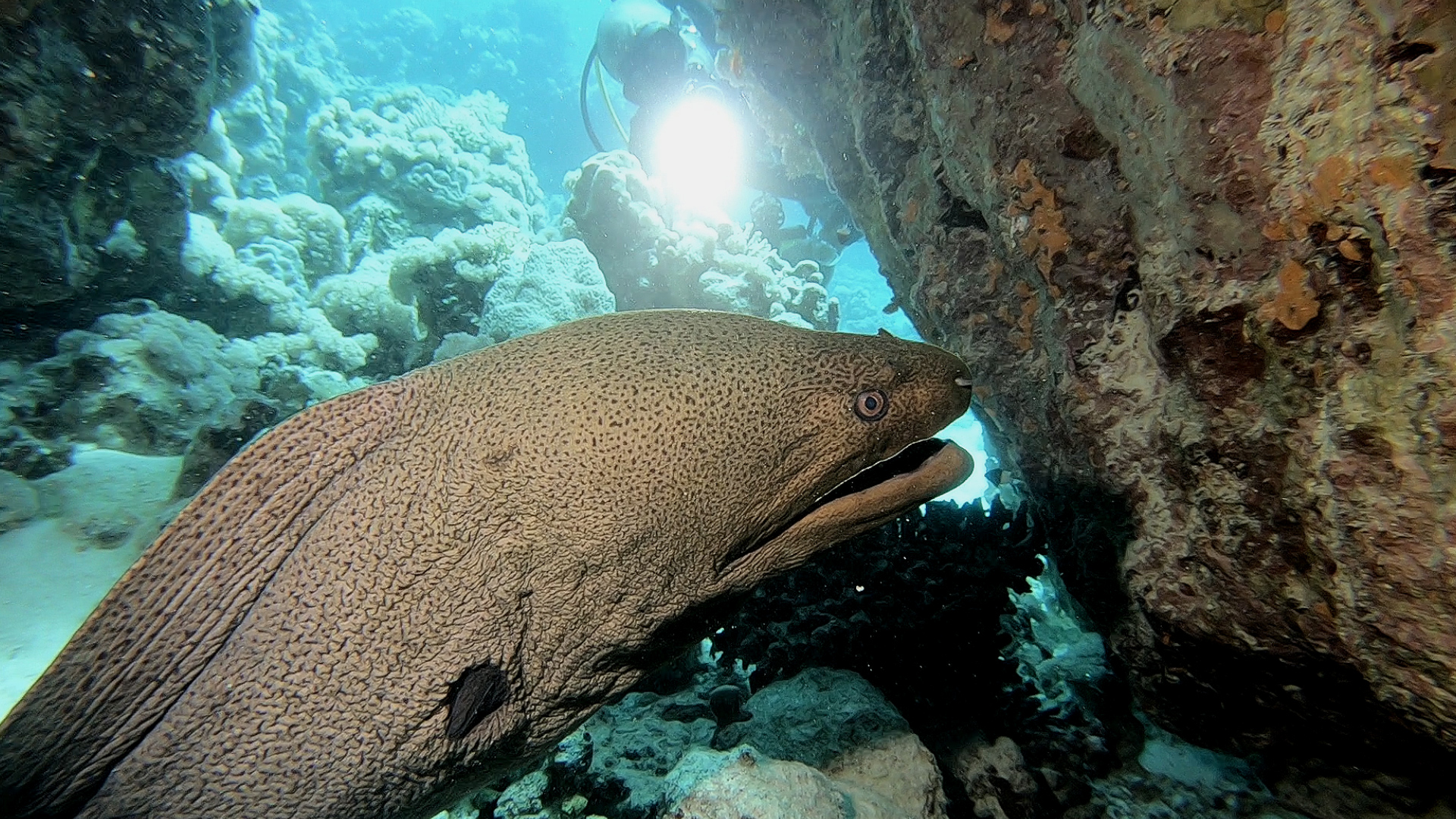
Then we located the turtles. They are very used to divers and so show little concern when slowly approached. In fact occasionally one will come over to see what you are doing. There is always huge excitement when diving with a turtle. The shear thrill of sharing a moment with another species.
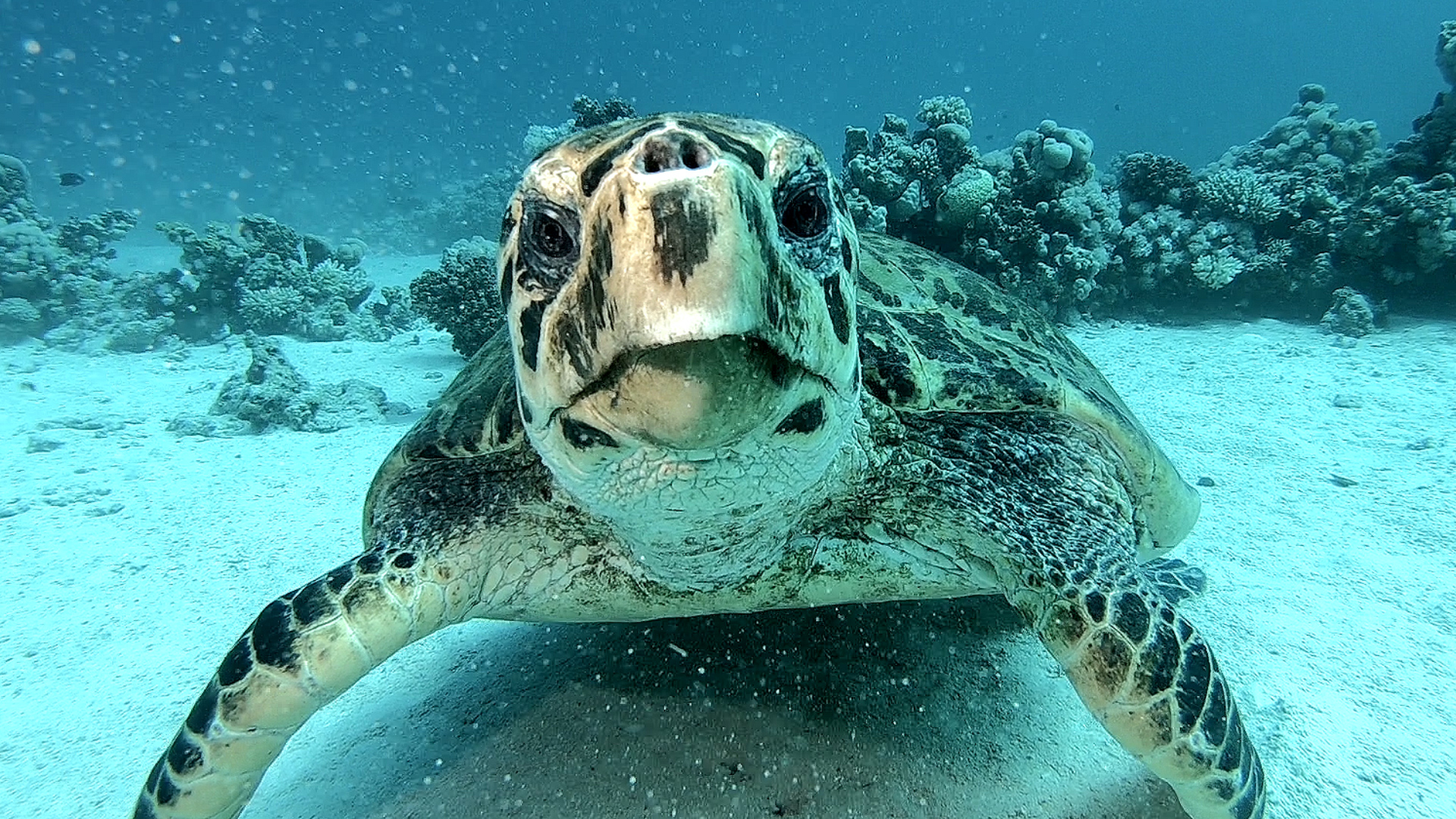
What a fantastic way to finish a wonderful few days diving and I would like to thank SOMABAY, ORCA DIVING and THE BREAKERS for making my stay such a good one.
I had a great time, with diving everyday either on the house reef or on one of the offshore reefs by inflatable or larger day boat. Orca diving provided high quality equipment and facilities while the staff were all very friendly and welcoming. The Breakers was right on the coast with nice rooms, good food and once again friendly staff making the whole trip a real pleasure.
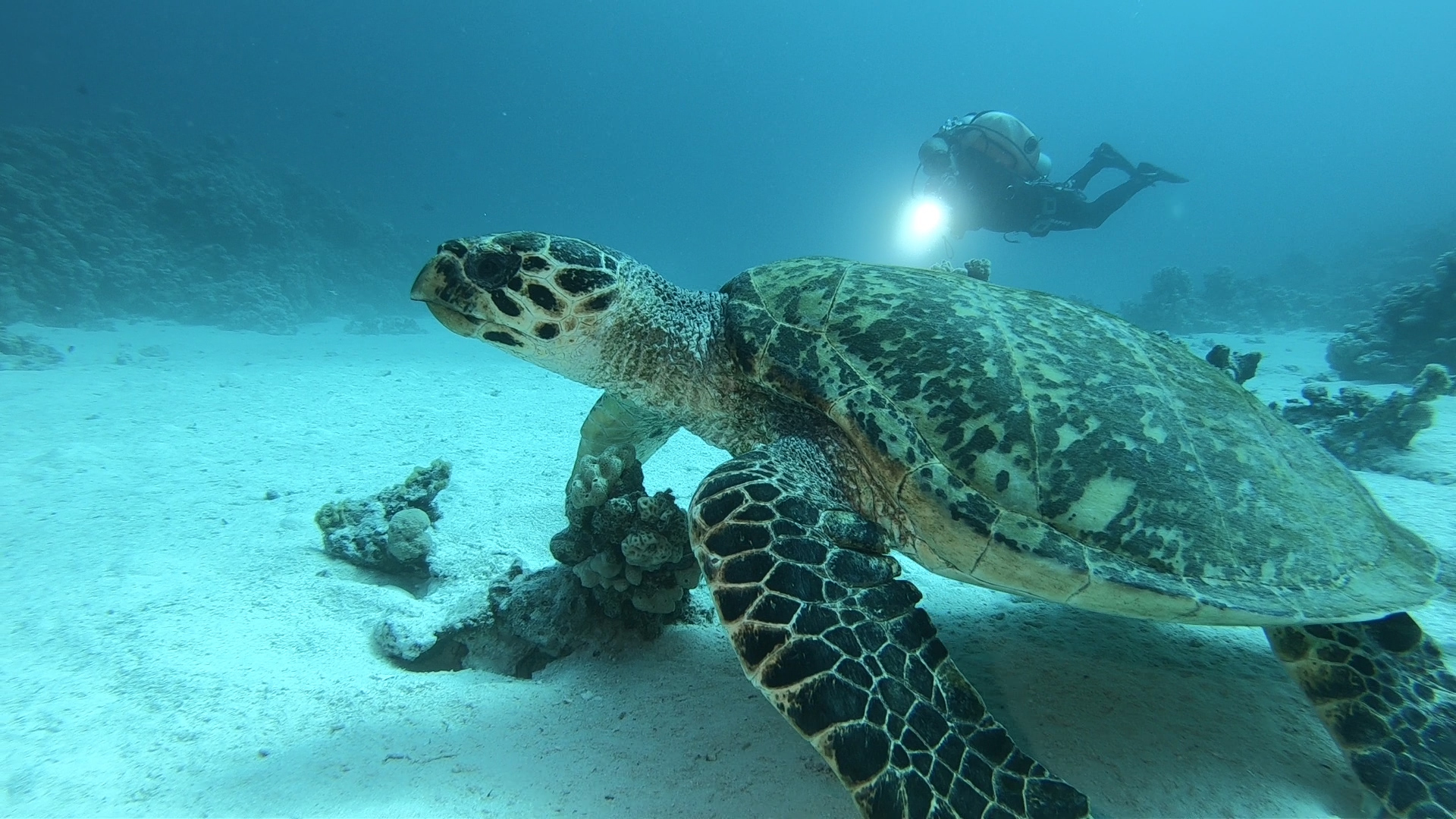
Soma Bay covers an entire peninsula and is home to several resorts as well as residential compounds.
As well as scuba diving, Somabay caters for many other sports and activities, and so is perfect for families as well as individuals and/or groups. And of course there is always time to lay peacefully on the beach under the Egyptian sun.
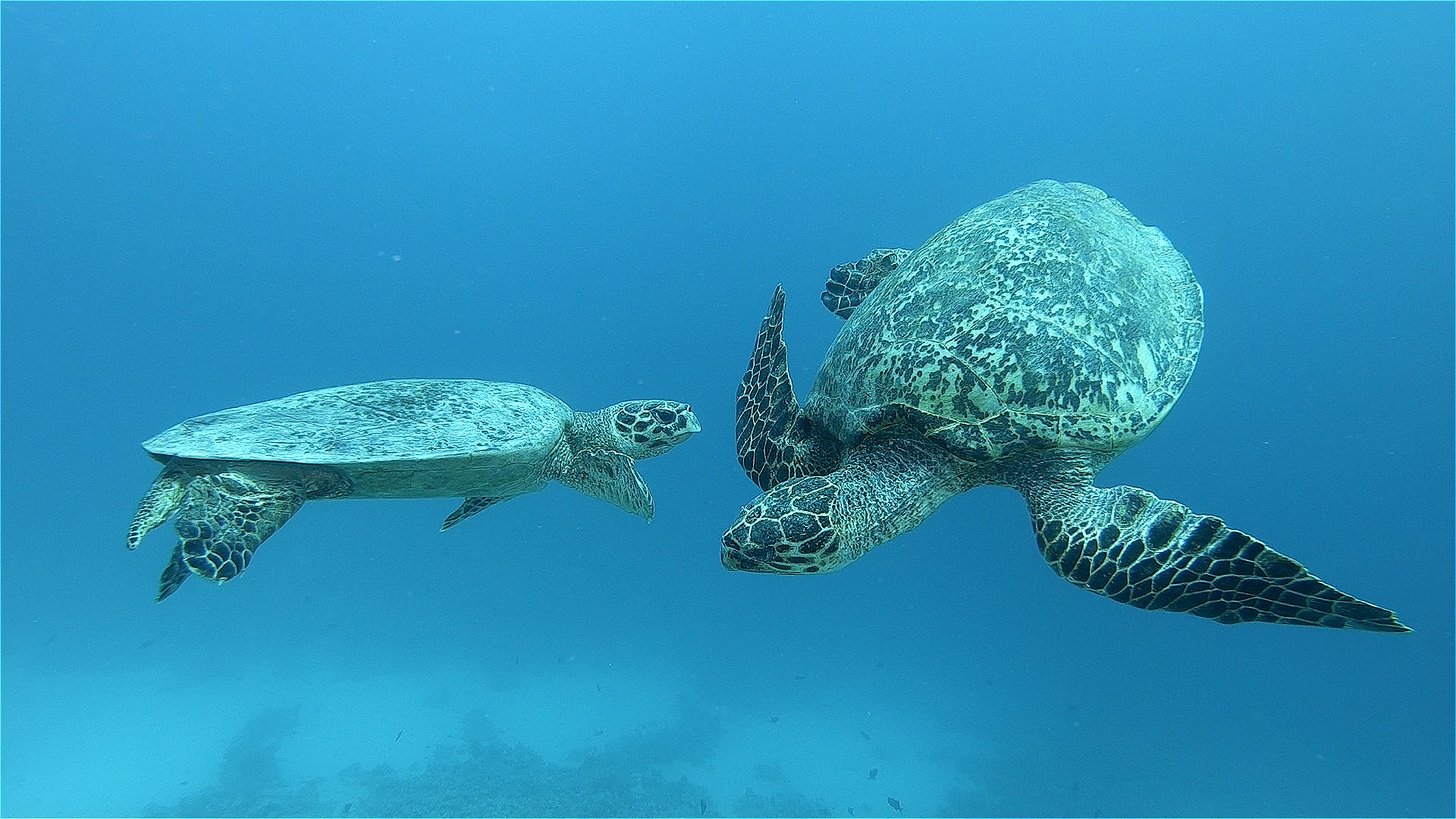
Book your next Red Sea dive adventure with SOMABAY! For more information, visit www.somabay.com.
Stay at the Breakers Diving & Surfing Lodge when you visit! For more information, visit www.thebreakers-somabay.com.
Find out more about ORCA Dive Clubs at SOMABAY at www.orca-diveclubs.com/en/soma-bay-en.
Blogs
TRAVEL BLOG: Jeff Goodman Dives SOMABAY, Part 2

Day three of my trip to Somabay and we were spending the day on the Lady Christina and diving on the wreck of the Salem Express.
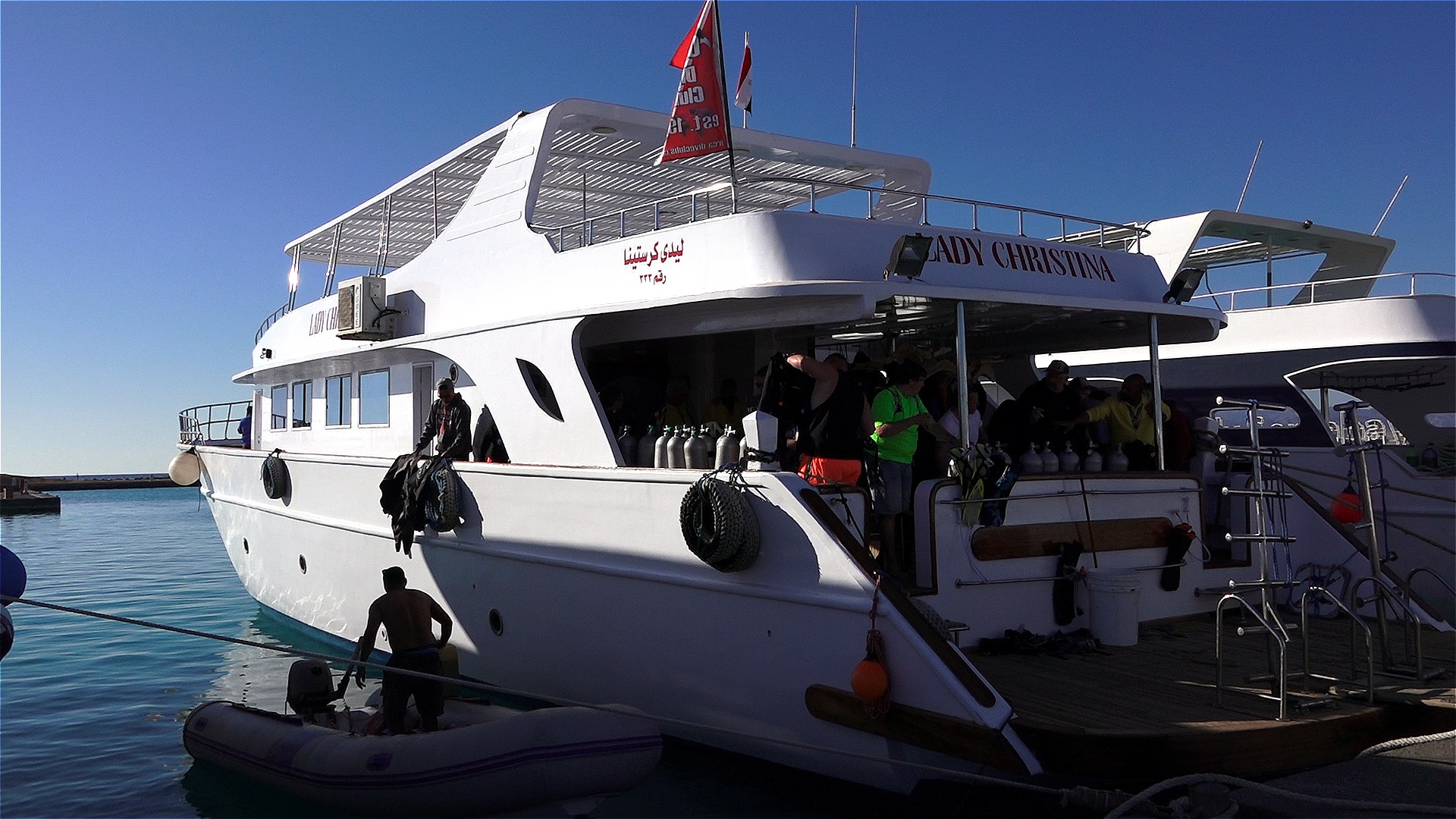
Diving wrecks for me is always one of mixed emotions. The excitement of diving a wreck is more than often tempered by the thought of loss of life when she sank. The Salem Express was a passenger ship and a roll-on/roll-off ferry travelling from Jeddah, Saudi Arabia to Safaga, Egypt. Most passengers were of poor class travelling home from their holidays while around 150 people were returning home from their pilgrimage to Mecca.

The ship struck a reef and sank within 20 minutes. Passengers were trapped below deck and the ship was filled with fear and panic.

The wreck area is strewn with personal belongings from the crew and passengers such as a transistor radio and a flat iron for clothes. A diver at sometime has put them in a prominent place to be seen.

Tragically only one life boat was launched while the others went down with the ship. More than 600 men, women and children lost their lives here.

It’s a stark reminder that the sea can be unforgiving and so when we dive on such wrecks we should do so with humble regard.
Returning to the surface, shoals of fish are gathered under our boat and seem to be welcoming us back into the light.
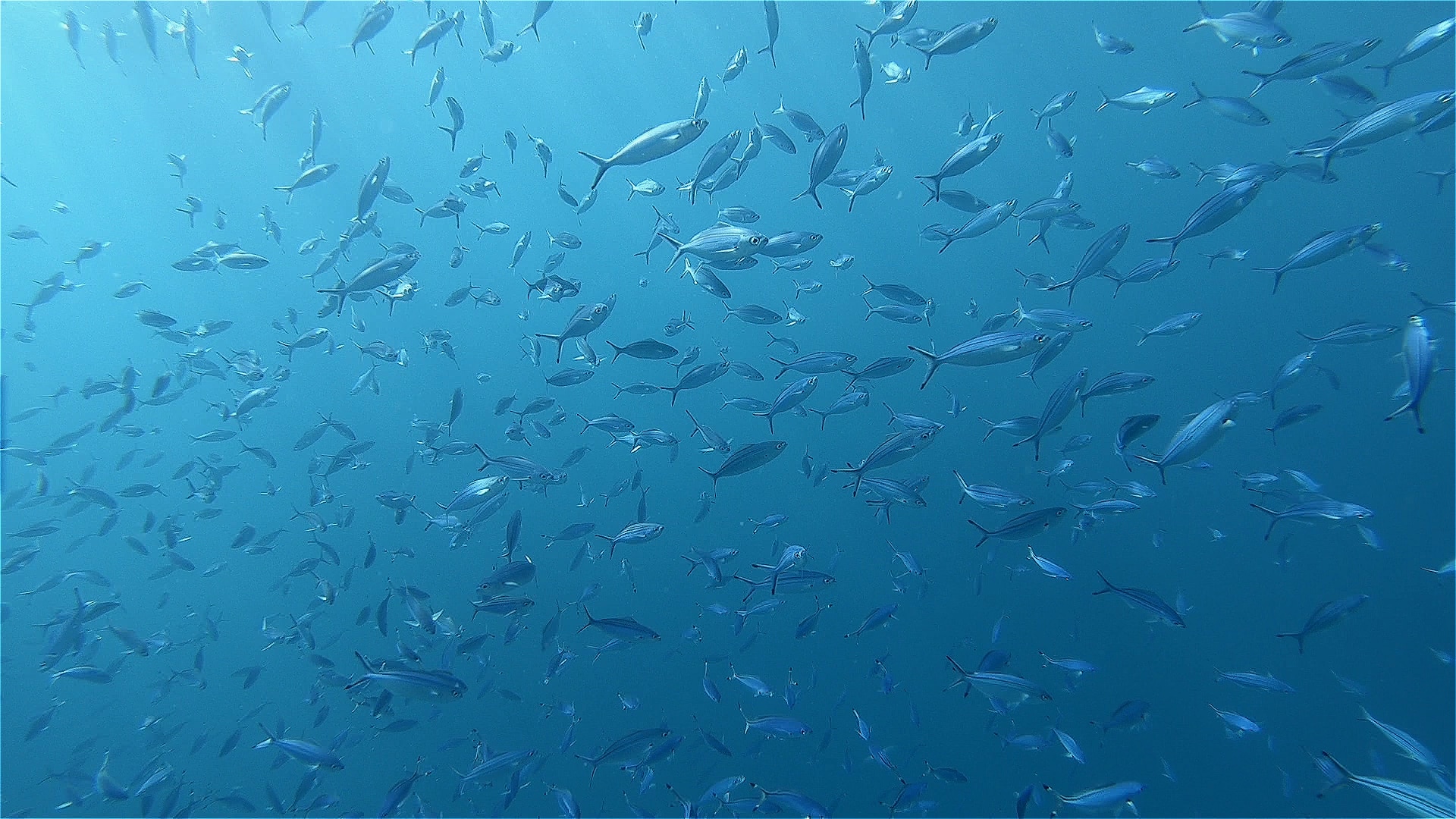
Back at the Breakers I sat in the dining area with a beer and a very good meal while my thoughts still remained with the day’s dive on the Salem Express.
Check in for part 3 tomorrow for Jeff’s last day of diving with Somabay on the off-shore reefs looking for turtles.
Book your next Red Sea dive adventure with SOMABAY! For more information, visit www.somabay.com.
Stay at the Breakers Diving & Surfing Lodge when you visit! For more information, visit www.thebreakers-somabay.com.
Find out more about ORCA Dive Clubs at SOMABAY at www.orca-diveclubs.com/en/soma-bay-en.
-

 News3 months ago
News3 months agoHone your underwater photography skills with Alphamarine Photography at Red Sea Diving Safari in March
-

 News2 months ago
News2 months agoCapturing Critters in Lembeh Underwater Photography Workshop 2024: Event Roundup
-

 Marine Life & Conservation Blogs2 months ago
Marine Life & Conservation Blogs2 months agoCreature Feature: Swell Sharks
-

 Blogs1 month ago
Blogs1 month agoMurex Resorts: Passport to Paradise!
-

 Gear News3 months ago
Gear News3 months agoBare X-Mission Drysuit: Ideal for Both Technical and Recreational Divers
-

 Blogs2 months ago
Blogs2 months agoDiver Discovering Whale Skeletons Beneath Ice Judged World’s Best Underwater Photograph
-

 Gear Reviews2 months ago
Gear Reviews2 months agoGear Review: Oceanic+ Dive Housing for iPhone
-
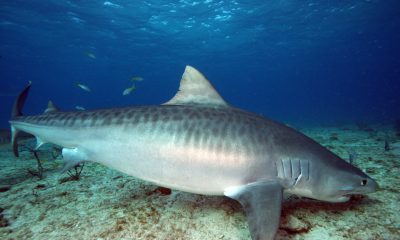
 Blogs3 months ago
Blogs3 months agoThe Thrilling Encounter with Tiger Sharks at Beqa Lagoon’s ‘The Colosseum’ with Coral Coast Divers


